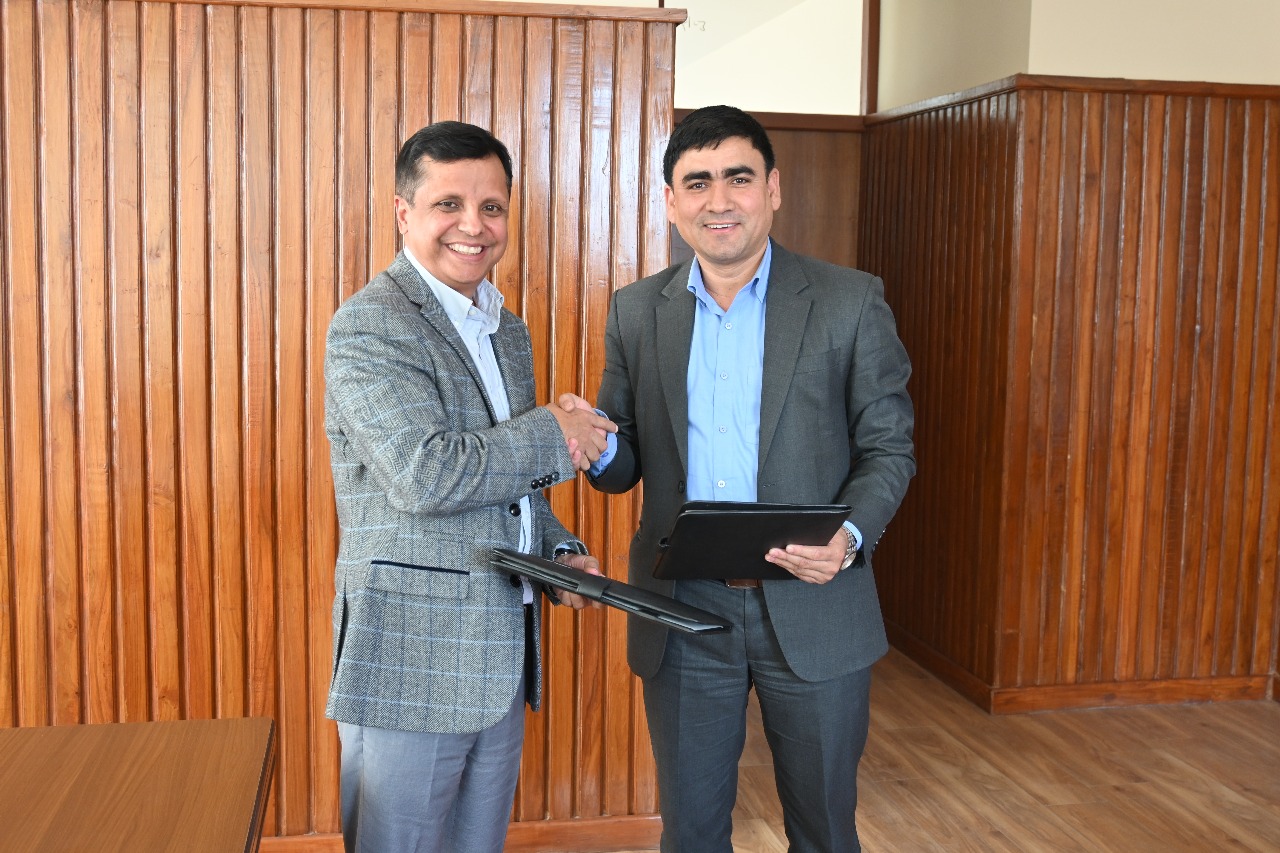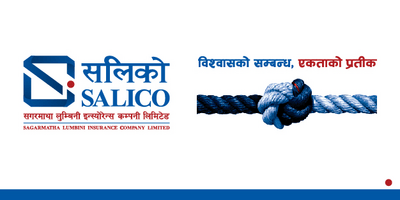Unraveling Nepal’s Banking Conundrum: The Rise of NPAs and NBAs and a Path Forward
- Suman Subedi
- 2025 Aug 10 16:18

Introduction: The stability and health of the banking sector are vital to the overall economic performance of any country. Nepal's banking sector, once a pillar of financial stability, is now grappling with the twin specters of Non-Performing Assets (NPAs) and Non-Banking Assets (NBAs) which have emerged significant challenges for financial institutions and policymakers. This challenge marked by deteriorating asset quality and unsold collateral has started to undermine banks’ liquidity, capital adequacy, and ultimately, public trust. The increase in defaulted loans, reduced recoveries, and mounting unproductive assets threaten the resilience of banks and the flow of credit to the real economy. A glance at the statistics reveals the gravity of the situation.
Drawing on the most recent figures from the Nepal Rastra Bank and other credible financial reports, here’s how NPAs and NBAs have evolved:
Non-Performing Loan (NPL) Ratios
- Mid‑June 2024: Avg NPL stood at 3.98%
- Mid‑June 2025: Rose to 5.24%—a jump of 1.26 percentage points
- Q3 FY 2081/82 (Chaitra 2025): NPL at 5.24%, up from 3.98% in Q3 FY 2080/81
- These markers across mid‑2024 to early 2025 reflect a sustained upward trajectory, suggesting that the NPL ratio has moved from below 4% levels into a troubling 4–5.5% band.
Non-Banking Assets (NBAs) Volume
- Mid‑June 2024: NBAs totaled Rs 28.73 billion
- Mid‑June 2025: Total NBA across all BFIs hit Rs 45.70 billion, rising 59.07% compared to the prior year
- The steep rise over the past 12 months itself is a serious data point.
As mentioned above, Nepal's banking sector has witnessed a noticeable uptick in NPAs and NBAs in recent years. Non-performing assets refer to loans and advances for which the principal or interest payment has remained overdue for 90 days or more. NBAs, on the other hand, are assets acquired by banks in lieu of defaulted loans, often through loan recovery mechanisms such as auctions or court settlements.
Currently, Nepalese banks are facing a “perfect storm” comprising of rising NPAs, ballooning NBAs, underutilized liquidity, and weak loan growth. Despite ample deposits (healthy credit-to-deposit ratio of 78–79%), banks are unable or unwilling to extend credit due to mounting default risks. NBAs which include typically collateral such as real estate or machinery seized post default has remain unsold in a sluggish property market. The lack of buyers forces banks to hold these assets, tying up capital and forcing additional provisioning which is acting as a double pull-on profitability and liquidity. Overlaying this is a growing concern over governance, evergreening of loans by extending new credit to mask as performing assets and public distrust fueled by compliance lapses and murky practices.
Key Reasons for the Increase of NPL/NBA:
- Economic Slowdown: Post-COVID recovery has been sluggish, with declining demand, weak investment sentiment, and reduced export performance affecting borrowers’ repayment capacity.
- High Credit Expansion During Booms: In past years, banks aggressively expanded credit during economic upturns without robust risk assessment. As the economy slowed, many of those loans turned sour.
- Overexposure to Real Estate and SMEs: A large portion of loans is concentrated in real estate, construction, and small businesses sectors that are highly vulnerable to cyclical downturns.
- Poor Risk Management and Credit Appraisal: Weak internal control systems, inadequate due diligence, and influence of vested interests in lending decisions have worsened loan quality.
- Ineffective Legal Framework: Delayed court processes, cumbersome loan recovery mechanisms, and borrower-friendly provisions in laws make it difficult for banks to recover loans.
Solutions to NPA and NBA Problems in Nepalese Banks
To address the NPA/NBA crisis, a multi-dimensional strategy involving regulatory, institutional, financial, and legal reforms is necessary.
1. Strengthening Credit Risk Assessment:
Banks must improve their credit appraisal systems by deploying AI-based credit scoring, better due diligence, and real-time monitoring of borrower health.
2. Improved Loan Classification and Provisioning:
The central bank (NRB) should ensure strict implementation of asset classification norms and provisioning guidelines, incentivizing early recognition and resolution of bad loans.
3. Legal and Judicial Reform:
Simplifying and expediting court procedures related to loan defaults, collateral seizures, and dispute resolutions is crucial. Fast track debt recovery needs to be warranted through effective debt recovery tribunal. Current implementation problems of Debt Recovery Tribunal need to be addressed for improvisation.
4. Incentivizing Repayment:
One-time settlement (OTS) schemes, loan restructuring, and interest waiver provisions for genuine borrowers facing temporary financial stress can improve recoveries.
5. Enhanced Governance:
Bank boards and management must be made more accountable. The NRB should enforce governance reforms to prevent political and insider interference in lending.
Apart from conducting the adjustments as mentioned above, the establishment of an Asset Management Company (AMC) or Asset Management Authority has become essential in Nepal as the scale and complexity of rising NPAs and NBAs have surpassed the capacity of individual banks to manage on their own.
Why is a powerful Asset Management Company/Asset Management Authority required?
While internal improvements in credit risk management such as stricter loan appraisal, monitoring, and provisioning are necessary, they are reactive and slow to address the legacy burden of distressed assets. Banks are not structured to specialize in asset recovery or liquidation, and holding on to NBAs ties up valuable capital and resources. An AMC can centralize the resolution process, professionally manage asset disposal or restructuring, and free banks to refocus on productive lending, thereby accelerating the financial sector's overall recovery and stability.
Nepal Rastra Bank’s recent monetary policy outlines the establishment of an Asset Management Authority or AMC to address the growing problem of NPAs and NBAs. An Asset Management Company (AMC) in the context of banking and finance refers to a specialized institution created to acquire, manage, and resolve non-performing assets (NPAs) and non-banking assets (NBAs) from financial institutions. Its primary role is to clean up the balance sheets of banks by taking over their distressed assets and undertaking recovery, restructuring, or liquidation of those assets in a professional and focused manner. When implemented effectively backed by strong legal frameworks and independent governance, an AMC can play a transformative role in restoring financial stability and accelerating credit flow in the economy.
Key Objectives of AMC:
- Acquisition of NPAs and NBAs:
- The AMC purchases non-performing loans and seized collateral (NBA) from banks—either at a negotiated price or based on valuation guidelines.
- This helps banks remove bad loans and unproductive assets from their books, improving liquidity and regulatory compliance.
- Asset Recovery and Resolution:
- The AMC works to recover the value of the acquired assets through:
- Auction or sale of collateral (especially in case of NBAs like land, buildings).
- Restructuring or settlement of loans with borrowers.
- Revival of viable projects by infusing new capital or changing ownership.
- The AMC works to recover the value of the acquired assets through:
- Improved Efficiency:
- Unlike banks, which have multiple operational priorities, an AMC is focused solely on asset recovery, allowing it to move faster and more strategically.
- It can bundle bad loans and sell them to investors, initiate legal proceedings, or work with turnaround specialists.
- Capital Relief for Banks:
- By offloading toxic assets, banks can reduce their provisioning burden, improve capital adequacy, and reallocate resources to new, productive lending.
Global Practices to Address NPL/NBA Problems through AMC/AMA
Several countries have faced similar crises and implemented successful mechanisms:
1. India – Formation of Bad Bank and IBC:
India established the National Asset Reconstruction Company Limited (NARCL), known as the "bad bank," to acquire and resolve bad loans. Additionally, the Insolvency and Bankruptcy Code (IBC) significantly strengthened loan recovery by offering time bound and creditor friendly resolution.
2. South Korea – Korea Asset Management Corporation (KAMCO):
During the Asian Financial Crisis, South Korea set up KAMCO to acquire non-performing loans from financial institutions and recover value through asset sales and restructuring.
3. Malaysia – Danaharta:
Malaysia created Danaharta, a government-owned AMC, which successfully reduced NPAs by acquiring bad loans and using aggressive resolution mechanisms.
4. USA – Resolution Trust Corporation (RTC):
Post the savings and loan crisis, the U.S. established RTC to take over failed institutions and liquidate assets, restoring financial stability.
These cases show that centralized asset management institutions, supported by strong legislation and independent governance, can significantly reduce bad loans and revive banking sectors.
Can Asset Management Company Solve the Issue in Nepal?
Nepal’s Monetary Policy and annual budget for FY 2025/26 have floated the idea of creating a “bad bank” or Asset Management Company (AMC) to absorb distressed loans and NBAs. Data driven urgency and global precedents both support this move. If designed and operated effectively, the proposed Asset Management Company (AMC) can:
- Centralize bad asset handling and improve recovery efficiency.
- Allow banks to offload toxic assets, freeing up capital for fresh lending.
- Specialize in restructuring, auctioning, or reviving sick units.
- Create a platform for collaboration with domestic and foreign investors.
However, for the AMC to be effective, it must be:
- Legally empowered to take over and resolve distressed assets.
- Professionally managed, free from political influence.
- Equipped with valuation, restructuring, and litigation expertise.
Challenges and Hurdles
Despite the potential, several hurdles could hinder the effectiveness of any solution:
1. Legal Bottlenecks:
Nepal’s laws related to collateral seizure, bankruptcy, and liquidation are outdated and lengthy. Without legal reform and authority, AMAs may also struggle.
2. Political Interference:
Nepal’s banking sector has long been influenced by political interests. Unless institutional independence is guaranteed, any new authority may become ineffective.
3. Real Estate Market Stagnation:
Without demand, NBAs cannot be sold timely.
4. Governance Risks:
Without transparency and independence, the AMC could fall prey to the influence that has fueled bad lending.
5. Public Trust:
Scandals and distrust mean any new authority must be built credibly.
6. Regulatory Enforcement Gaps:
Delay in NRB intervention such as in the case of Karnali Development Bank’s inflated NPLs also raises concerns about oversight.
7. Valuation Disputes:
Banks may find it difficult to agree on the fair price at which to sell NPAs to the AMC, leading to delays in transactions.
8. Funding and Capitalization:
Setting up a well-capitalized AMC requires significant investment. Without government or international backing, it may not have the necessary financial muscle to solve the issues.
9. Coordination Issues:
Effective coordination is needed between banks, NRB, judiciary, and other regulators. Disjointed efforts always reduce overall impact.
Conclusion
Nepal now stands at a crossroads to ignore the rising NPLs and NBAs and risk a systemic crisis or to act decisively with a credible AMC, legal reform, and governance overhaul so that the sector can emerge to be more resilient and ready to serve its true purpose: financing Nepal’s aspirations. The increase in NPAs and NBAs is a pressing issue threatening the solvency, profitability, and confidence in Nepal’s banking sector. A holistic approach combining regulatory reforms, institutional innovation, legal overhaul, and international best practices is essential. While the proposed Asset Management Company can be a game changer, it must be insulated from inefficiency and politicization. Learning from countries like India, South Korea, and Malaysia, Nepal can build a robust framework for tackling bad assets and restoring health to its financial sector.
Read Also:
१. हाइपोथिकेशन गरिएका सुरक्षणबाट कर्जा नउठेको भन्दै बैंकरलाई थुन्नु अव्यवाहारिक, सुमन सुवेदीको लेख
५. राष्ट्र बैंकको एकिकृत निर्देशनको संशोधन: मूल रोगको औषधी नगरी लाक्षणिक उपचार
७. Rebuilding Business Confidence: A Path to Nepal's Economic Development, Article of Suman Subedi
९. आर्थिक वर्ष २०८२/८३ को मौद्रिक नीतिको समालोचनात्मक विश्लेषण: सुमन सुवेदी
(पूर्व बैंकर सुवेदी नेपाल राष्ट्र बैंकको वित्तीय साक्षरता अभियानका ट्रेनर हुन् । त्रिभुवन विश्व विद्यालयका विभिन्न क्याम्पसमा अध्यापन गराउदै आएका सुवेदी सँग १७ वर्षको बैंकिङ अनुभव रहेको छ।)

![$adHeader[0]['title']](https://bfisnews.com/images/bigyapan/1759825227_1100x100.gif)

















.jpeg)







प्रतिक्रिया